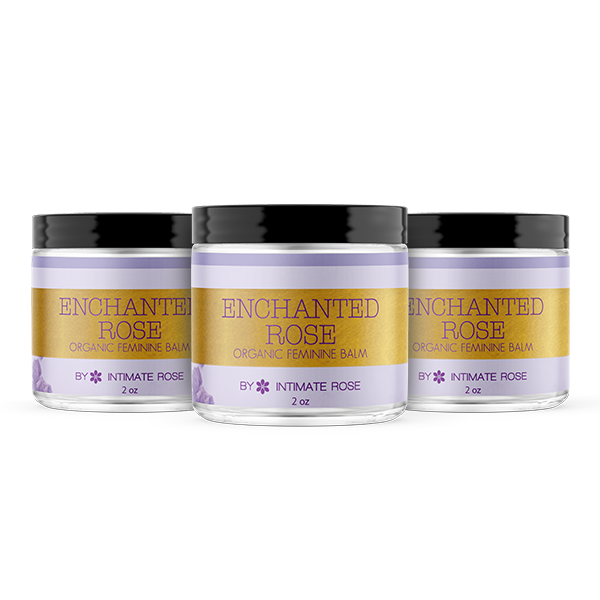When hormone levels fluctuate during perimenopause and menopause, women’s quality of life is often disrupted by symptoms like hot flashes, mood changes, lowered libido, poor sleep, vaginal discomfort, and fatigue.
Although MHT is an effective way of treating these symptoms, many women are reluctant to use it due to fears of increased cancer risks but MHT is much safer than women were once led to believe.
Rather than prescribing “one type that fits all”, the key to using MHT to relieve menopause symptoms is finding the right type of hormone therapy for each woman.
In this article, we explain the differences between estrogen therapy and combination therapy, why women might be suited to one above the other, and how the risks of MHT can be avoided while enjoying the benefits.
What is Menopause Hormone Therapy (MHT)?
From birth until death, the hormones estrogen, progesterone, and testosterone naturally fluctuate to support female development, menstruation, reproduction, pregnancy, and beyond.
Although primarily known as sex hormones, estrogen, progesterone, and testosterone are also linked to heart and brain health, strong bones, muscle mass, thyroid function, collagen production, libido, and genitourinary wellness. Therefore, as hormone production generally declines between the ages of 45-55, ensuing symptoms are typically connected to these body systems.
During perimenopause, MHT is prescribed to rebalance the sex hormones, alleviate symptoms, and restore quality of life. MHT is also prescribed to maintain muscle mass & bone density, decrease the risk of developing cardiovascular disease, and treat genitourinary issues.
The Different Types of MHT?
Declining hormone production happens differently for each woman, which means menopause symptoms and MHT treatment also vary. Even though the majority of menopause symptoms are predominantly linked to declining estrogen, for instance, decreased progesterone and testosterone can worsen symptoms in some, and cause additional symptoms in others.
Therefore, proactive healthcare providers will first evaluate a patient’s symptoms, overall health, underlying conditions, and family history to determine which type of MHT is right for each woman.
The most common types of MHT are estrogen therapy and combination therapy. Estrogen therapy administers only estrogen, while combination therapy includes estrogen and progesterone. Depending on symptoms some women are prescribed testosterone.
MHT also falls into two main categories: systemic and local.
Systemic HRT means hormone therapy will impact the entire body and is prescribed to treat several symptoms like hot flashes, mood changes, dry skin, and low libido. It is available as pills, patches, gels, sprays, and vaginal rings.
Local HRT is designed to treat only one area of the body and is typically applied as a cream, suppository, or gel. It is commonly used to treat genitourinary symptoms of menopause, which include discomfort or irritation of the vagina, vulva, urethra, and bladder.
The most vital factors considered before prescribing which type of MHT is right for each woman include symptoms, age, overall health, family history, and whether they still have their uterus or not.
Hormonal and Non Hormonal Menopause Relief

What’s the Difference Between Estrogen Therapy and Combination Therapy?
The main difference between estrogen therapy and combination therapy is that progesterone, or its synthetic form progestin, is included in one but not the other.
Estrogen Therapy Explained
Although estrogen is the central hormone involved in menopause symptoms and treatment, estrogen therapy, also known as estrogen-only MHT is typically only prescribed for women who have had their uterus surgically removed (hysterectomy).
In these cases, estrogen therapy helps to alleviate several common menopause symptoms including hot flashes, night sweats, disrupted sleep, fatigue, mood swings, low libido, and vaginal discomfort.
Due to the link to heart, brain, and bone health, estrogen-only HRT is also believed to prevent cardiovascular disease, osteoporosis, and potentially memory loss in women of menopausal age.
Is Estrogen Therapy Risky?
Older research suggested that hormone therapy could increase the risk of breast cancer, uterine cancer, and blood clotting. However, updated studies have confirmed that for women who have had a hysterectomy, there is no risk of developing breast cancer when taking estrogen-only MHT.
This development is based on the findings that it is not estrogen that increases the risk of breast cancer in some women, but progestin. Progestin is a synthetic form of progesterone, artificially made in a lab. Although similar to progesterone produced by the body, progestin does not have the same molecular structure and impacts the body differently.
That being said, according to the book Estrogen Matters by Avrum Bluming MD and Carol Travis PhD, the risk of developing breast cancer from taking progestin is only 2% higher than that of taking progesterone. Both are very safe options.
In women where the uterus has been surgically removed, there is also no risk of uterine cancer.
Additionally, research has found that when taking estrogen-only MHT, applying estrogen directly to the skin with patches, gels, vaginal rings or sprays poses less of a risk of blood clotting than taking estrogen pills.
Combination Therapy Explained
Also known as combined MHT, combination therapy is prescribed to treat menopause symptoms in women who still have a uterus or those without a uterus that may find benefit from progesterone supplementation.
Containing both estrogen and progesterone, the supplemented estrogen in combination therapy works to relieve menopause symptoms, while progesterone is added to prevent endometrial cancer and help with other symptoms.
Throughout the childbearing years, estrogen and progesterone play a role in thickening the uterine lining (endometrium) in preparation for a fertilized egg to implant. When implantation does not occur, declining levels of progesterone and estrogen trigger the uterine lining to shed, more commonly known as a period.
When estrogen-only therapy is used to treat perimenopause and menopause symptoms, estrogen continues to thicken the uterine lining in women whose womb is still intact. However, periods become irregular and inevitably stop with menopause, so the thickened uterine lining no longer leaves the body through menstruation each month.
This can result in an overgrowth of the endometrium (hyperplasia) which can eventually lead to endometrial cancer.
Including progesterone in hormone therapy has been proven to prevent endometrial hyperplasia and the onset of endometrial cancer.
Is Combination Therapy Risky?
When taking combined MHT or combination therapy, research shows that transdermal bioidentical estrogen (patches, gels, vaginal rings, or sprays) poses less risk of blood clotting than taking estrogen pills.
While it is believed that certain synthetic progestins can cause a small increase in the risk of developing breast cancer, data has not found the same risk to be present in bioidentical progesterone.
Adding bioidentical progesterone or synthetic progestin to combined HRT has been proven to prevent uterine cancer.
Progesterone and Progestin in HRT: What’s the Difference?
Progesterone is a hormone produced by the body or a bioidentical hormone derived from plants, whereas progestin is an artificial hormone synthetically produced in a lab.
What Are Bioidentical Hormones?
Bioidentical estrogen, progesterone, and testosterone are initially derived from plants like yams and soy and then processed to create effective medications. They are chemically and structurally similar to hormones produced by the body and behave slightly differently to synthetically produced hormones.
Both bioidentical and synthetic hormones are safe and effective for most women, but each has its strengths and drawbacks. In some cases, bioidentical hormones are more helpful, while their synthetic counterparts can be a better fit in other cases.
For example, women who are progesterone intolerant or those experiencing heavy vaginal bleeding during the menopause transition can find relief from synthetically produced progestin. Menopause health experts also suggest that administering progestin in much smaller doses via an IUD can equally reduce the risk of uterine cancer.
Is Bioidentical Progesterone Used in Combined HRT?
Yes, it is. However, the skin does not easily absorb natural progesterone, so it cannot be administered with transdermal patches, gels, or sprays. For this reason, it is micronized (powdered and suspended in oil) and taken as a pill.
Hormone therapy consisting of natural hormones is known as Bioidentical Hormone Replacement Therapy (BHRT).
What Other Menopause Symptoms Does Progesterone Treat?
Even though estrogen is central to relieving menopause symptoms, and progesterone is primarily prescribed to protect the uterine lining from hyperplasia, it also provides other benefits for women in menopause.
Due to its effect on the central nervous system and the brain, progesterone can help treat menopause symptoms such as hot flashes, sleep disturbances, and mood changes.

Get your personalized HRT plan!

Get your personalized HRT plan!
Conclusion
Changing hormone levels that generally occur between ages 45 and 55 can result in menopause symptoms that range from mild to severe depending on the individual.
Although a lot was learned from older studies on MHT, the suggestion that it could increase the risk of breast cancer and clotting in most women was found to be incorrect. Current feedback on MHT suggests that individualizing hormone therapy according to each patient’s age, health, family history, and symptoms is vital and largely eliminates the risks for the majority of women.
In addition to easing menopause symptoms, estrogen therapy and combination therapy are also helpful in preventing osteoporosis and cardiovascular disease. While estrogen-only therapy is predominantly recommended for menopause symptoms after a hysterectomy, there are also cases where hysterectomy patients can benefit from progesterone.
When considering MHT, it’s important to find a healthcare practitioner willing to determine the right type of MHT for each patient and monitor their progress afterward. It’s also important for patients to speak openly with their healthcare provider about their symptoms, age, overall health, and family history to determine the right type of MHT for their symptoms.
This content is intended solely for informational purposes and should not be considered medical advice. It is not meant to replace the guidance of a qualified healthcare professional. Be sure to consult with your doctor to discuss the potential risks and benefits of any treatment options.
References
Mayo Clinic – Hormone Therapy: Is it Right for You? - https://www.mayoclinic.org/diseases-conditions/menopause/in-depth/hormone-therapy/art-20046372
The Menopause Charity – Types of Hormone Replacement Therapy (HRT) - https://www.themenopausecharity.org/2021/10/20/types-of-hormone-replacement-therapy-hrt/
National Library of Medicine - Role of Progesterone in Endometrial Cancer - https://www.ncbi.nlm.nih.gov/pmc/articles/PMC4767501/
Cancer Research UK - Does hormone replacement therapy (HRT) increase the risk of cancer? - https://www.cancerresearchuk.org/about-cancer/causes-of-cancer/hormones-and-cancer/does-hormone-replacement-therapy-increase-cancer-risk
Menopause Balance - IS HRT off limits if I’ve had a blood clot? - https://www.balance-menopause.com/menopause-library/is-hrt-off-limits-if-ive-had-a-blood-clot/
National Library of Medicine - Understanding Estrogen Action During Menopause - https://www.ncbi.nlm.nih.gov/pmc/articles/PMC2717878/
Nature - Oral micronized progesterone for perimenopausal night sweats and hot flushes a Phase III Canada-wide randomized placebo-controlled 4 month trial - https://www.nature.com/articles/s41598-023-35826-w

Get your personalized HRT plan!












